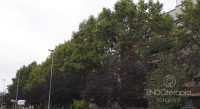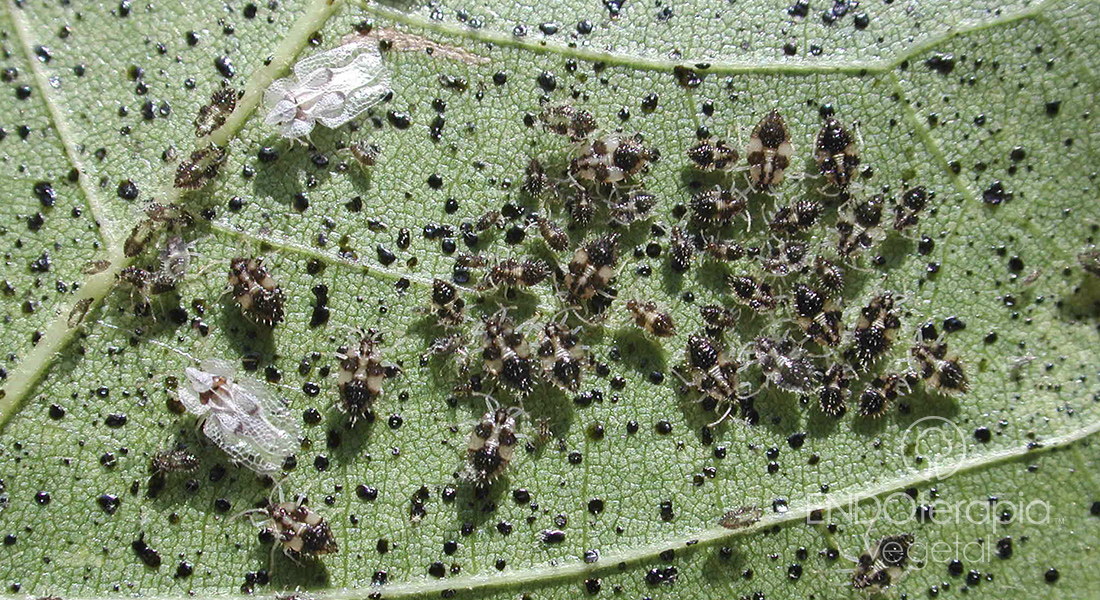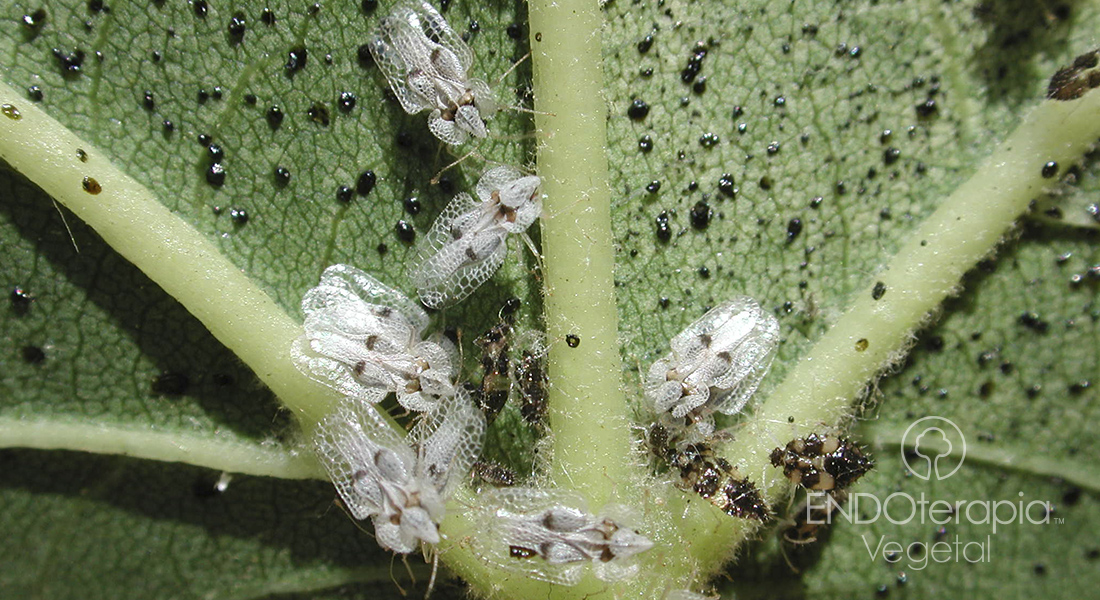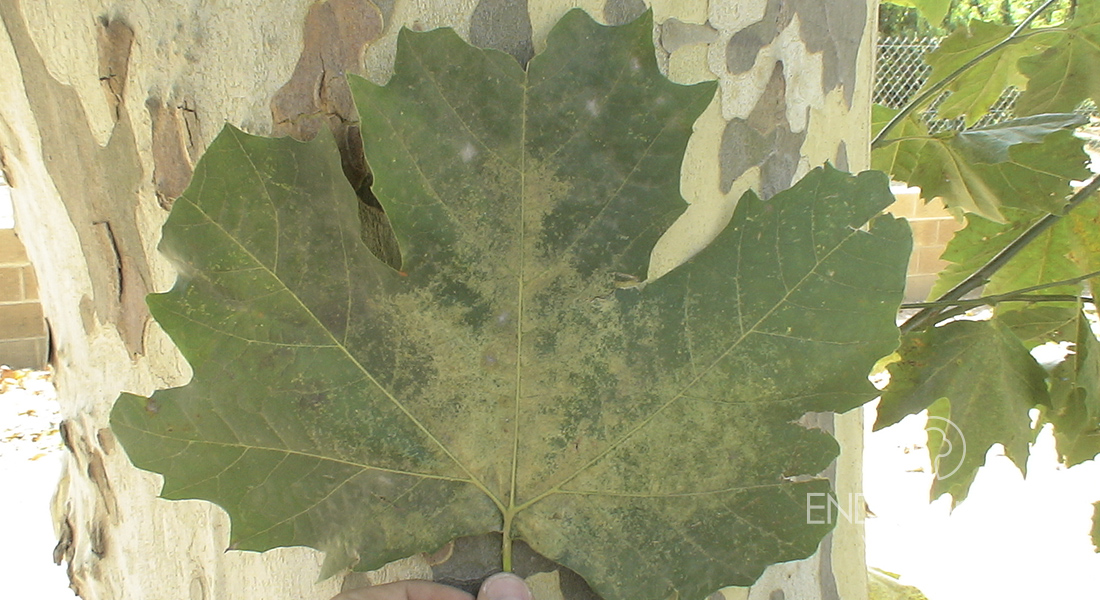Project Description
It is a sucking hemiptera/ homoptera insect (Fig. a and Fig. b). The adult is around 4 mm long, reticulate in appearance, with transparent wings, white veins and a bright black abdomen. The nymphs are dark in colour and go through 5 larval instars (in the last one they develop the elytra).
The adults spend the winter under the bark and in the cracks of the trunk, so they are able to withstand extreme cold temperatures. In spring, with budding, the adults leave the winter lethargy moving towards the leaves, placing themselves on the underside where they feed. After conception, females lay eggs near nerve endings. Further on, the eggs hatch. Nymphs of the same larval instar tend to group together and live in a gregarious way. They can have as many as three generations a year.
This pest mainly causes two types of damage:
- Impairment of the vigour of the tree due to decreased photosynthetic capacity.
- Visual and environmental, due to the unsightly appearance of trees and the nuisance caused by adults in urban areas, due to their mass appearance and unconfortable bites.
A curative treatment can also be carried out. However, damage caused will disappear at a slower pace.











